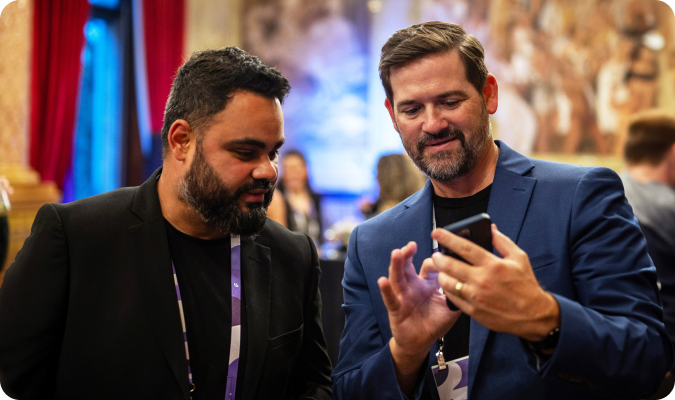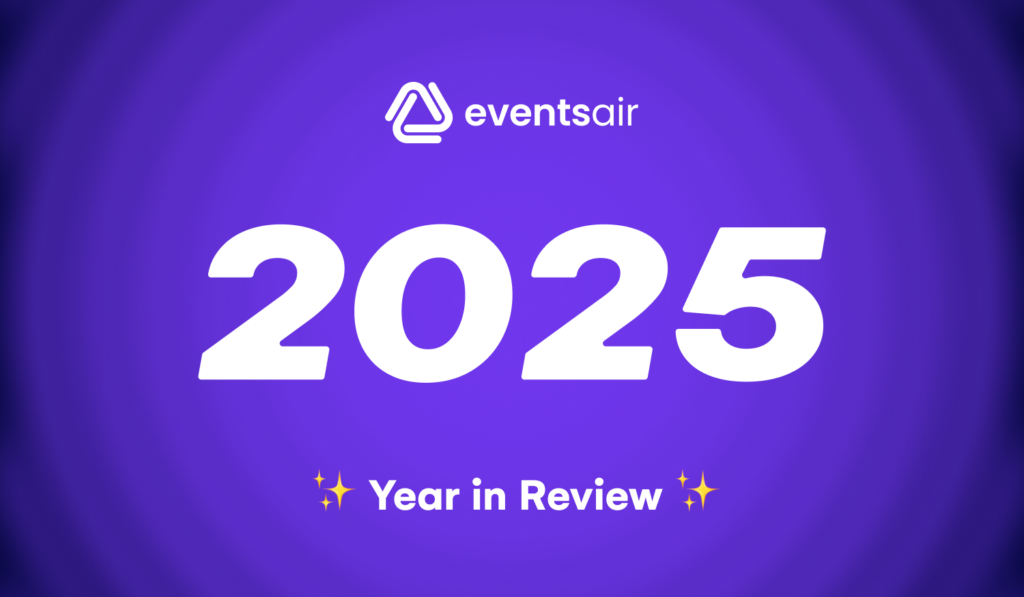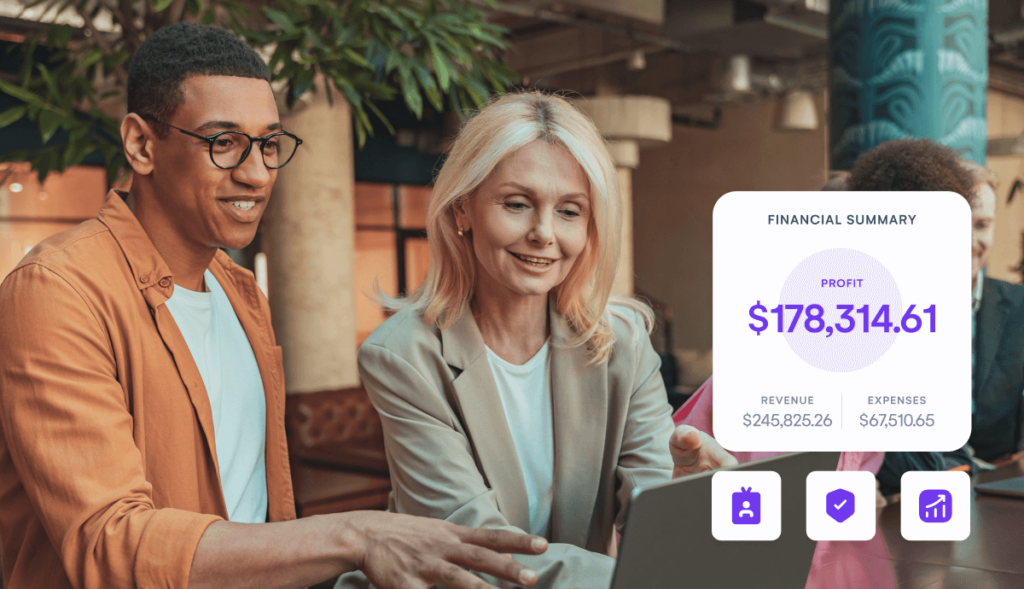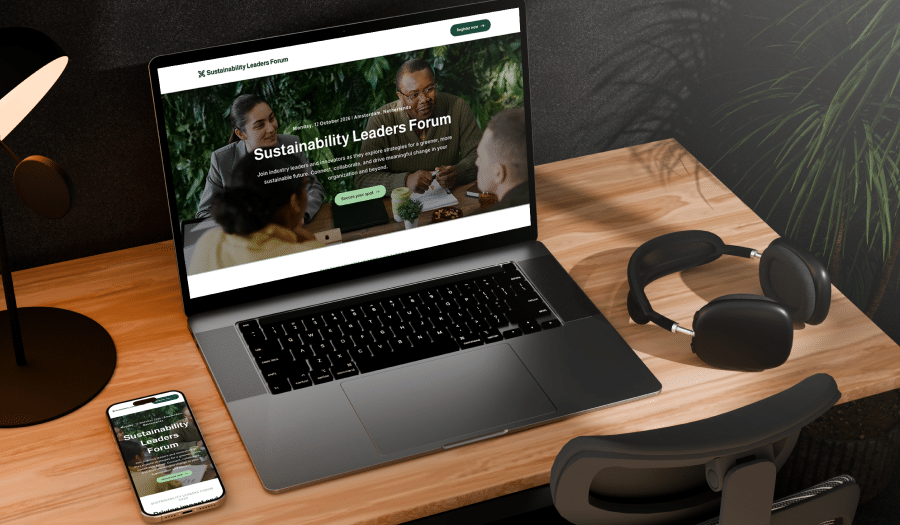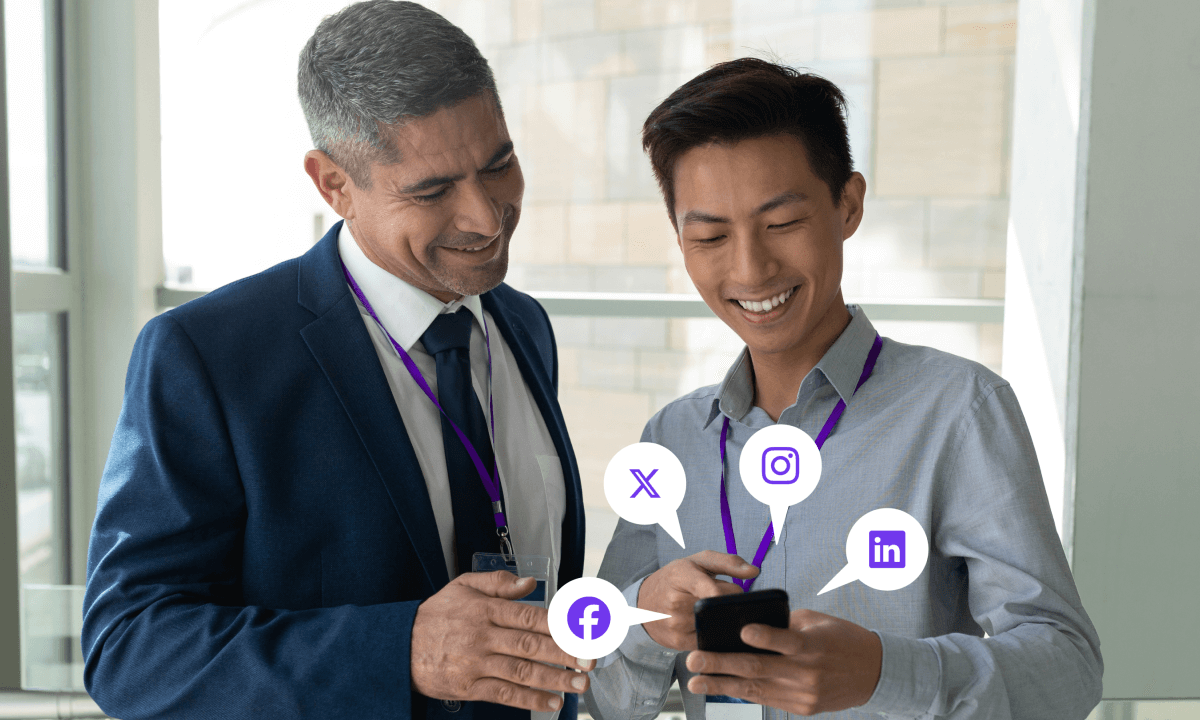
It’s no secret that social media can promote your event to a wider audience, boost attendee engagement and create a more successful event – it’s one of the reasons three-quarters of event marketers use social media as a key engagement strategy.
You’re probably already using at least one social media platform as a marketing channel for your event. But are you reaping the benefits of a solid social media strategy?
Let’s take a closer look at several ways you can use social media to promote your event and boost attendee engagement pre-event, during and after your event.
Why is social media important in event promotion?
Social media should be a key tactic in your event marketing and promotion mix, and there is a very good reason for this. Most people engage with at least one social media platform as part of their daily personal or professional lives. By promoting your event on the right social media platform (that is, the platforms where your target audience are most active), you’ll drive engagement and raise visibility of your event. You’ll also create a community for your audience to engage with each other, as well as your brand.
In fact, in 2024 social media is probably one of the most effective ways to drive engagement for your event. It doesn’t matter whether you’re running your event in-person, or in a virtual or hybrid format – there’s going to be at least one social media platform that can help you achieve your targets and goals.
9 tips to boost onsite engagement using social media
We’ve compiled a list of our nine favorite tips for using social media to boost onsite engagement at your next event:
- Start the conversation early on social media
- Build social media tools into your website
- Follow wherever your audience goes
- Tailor your message for each platform
- Create communities and opportunities
- Encourage discussion on social media
- Use real-time gamification to help attendees engage on social media
- Maintain your brand
- Encourage ongoing engagement
Let’s take a look at each of these now.
1. Start the conversation early on social media
As we all know, successful event planning starts with audience engagement long before the event itself. You can set yourself up for success by ensuring attendees are involved and invested in your event long before they arrive onsite.
You can create a buzz of excitement among your attendees and potential attendees by starting the conversation on social media well in advance of your event (The Delegate Wranglers nailed pre-event engagement and gamification recently). It also stretches your marketing budget further by making use of your attendees’ networks, and it can help you identify their motivations and desired outcomes.
You may even like to set up an event-specific hashtag, if it’s appropriate for your target social media channels. This will help you (and your attendees) find social media content about your event, quickly and easily. More on this a bit later.
2. Build social media tools into your event website
Your event website is a great starting point for your engagement campaign. By building social media tools into your website, you’re making it easier for your attendees to share your content and to find and interact with others. Further, it can give you insight into your attendees.
At the most basic level, you can start by simply ensuring your website displays icon links to your social media profile. Take it a step further by adding share buttons on individual pages or posts or embedding a feed of posts from your most popular social media channel.
If your event website has an attendee-only section, why not use social logins to streamline the process?
Today’s leading event management solutions, such as EventsAir, should help you to do all these things, using drag-and-drop website building functionality.
3. Follow wherever your audience goes
While each attendee may visit your website several times in the lead-up to your event, you’re more likely to keep them coming back regularly with gentle reminders. Email newsletters are one way to achieve this effect, but you’ll reach a wider audience with less effort if you work your social media platforms.
Take your event information and related stories onto the platforms your attendees are most likely to be using, regardless of your personal preferences. Brands have traditionally opted for Facebook, Instagram and X (previously known as Twitter), with professional bodies and B2B marketers adding LinkedIn to the mix.
TikTok and Snapchat are both underutilized by event professionals, but may be a good choice if your target audience skews towards younger Millennials and Gen Z. It may represent an opportunity for you to claim more than your fair share of the market, so don’t be afraid to try something new and jump on one of these platforms – even if no one else seems to be using it for event promotion.
Ideally, you just want to make sure you are showing up in the channels of interest to your audience.
4. Tailor your message for each platform
Much of the event-specific content you share on social media will be suitable for all platforms. Whether you’re introducing new speakers, discussing topic streams, or inviting guests to access special offers, you’ll want to ensure your message goes out on as many platforms as possible, using one of the many available social media management tools.
You may also like to try posting more general content, before, during, and after your event. This will help you start a conversation with your audience (see point 1), generate buzz, get to know your attendees and gather their opinions.
While the general theming of your content remains the same from social media platform to social media platform, it’s important to realize that when it comes to engagement patterns, not all platforms are created equal. This means that a key step for social media success is getting a feel for what works on each:
- Facebook favors visual content, both static images and videos, and is suitable for longer introductory statements that set a context and invite a conversation.
- X, formerly known as Twitter has always been about bite-sized chunks of text, and discussions have generally remained short and sweet despite the increased support for images, multiple tweets and more characters.
- Instagram prioritizes images over text, with captions presented below the image. Unlike the other platforms, Instagram doesn’t allow hyperlinks in your post (only in your profile) and reposting content requires a third-party app.
- LinkedIn suits longer-form content with a professional focus. Your audience is likely to post comments that are well-reasoned and explained in detail.
5. Create communities and opportunities
Picture how smoothly your introductions will go on day one if your guests have already met each other online. Of course, you’ll only accomplish this if you’ve made it easy for your attendees to find each other and get involved in the lead-up to your event. Social media is the perfect tool for this purpose.
Here are a few ways you can promote this sense of community and create opportunities for engagement:
- Create a Facebook page, group, or event – or all three. For example, you might use your page to share information about speakers, groups to encourage informal discussions about each of your conference streams, and an event for sharing material related to each session.
- Use X’s list feature to segment your social media audience by role or interest area. For example, you might create a public list for your speakers, another for vendors at your expo, and one for each stream of your conference.
- Create a poll on X, Facebook, or in a story on Instagram. Don’t overthink it – it could be as simple as asking which of your brand colors to feature on your event tote bag or media wall.
- Invite your attendees to join a LinkedIn group, where they can build their networks and discuss key topics from your event.
6. Encourage discussion on social media
Active discussion on social media can boost attendee engagement in two ways. First, they’ll want to continue their conversations when they arrive. Second, by uncovering their interests through your social media communities, you’ll be better equipped to meet their expectations.
With that in mind, think about how you can facilitate interactions on social media, rather than directing them. As mentioned above, this can be done by creating a unique event hashtag. Consider an abbreviation or acronym to keep it short and sweet, and check across platforms to make sure no one else is already using the hashtag for a different event.
7. Use real-time gamification to help attendees engage on social media
Gamification is one of the biggest trends in the events industry, so don’t miss the opportunity to make social media part of your game plan.
At the start of each session, remind your guests to use your hashtag or to share their social media content. Then simply add some incentives or prizes, such as free tickets to a social event or local attraction. If your event includes an expo, get your vendors involved, too. They’ll love the extra attention at their stand or stall.
Some of your attendees may be shy or uncertain about what to post, especially if they’re trying a new platform. Give them a few ideas by prominently displaying a feed of recent social media posts in your common areas.
If you’re live streaming your event to a wider audience, displaying your remote viewers’ questions and comments will help everyone feel like they’re part of the action.
Leading event management platforms even include a native social media feed – usually within the Attendee App. This helps remove additional barriers of participation and engagement as only event attendees can view posts, interact, and comment – creating a much safer, accepting space for everyone to share.
8. Maintain your brand
Social media is a powerful tool for attendee engagement – pre-event, onsite and post-event. It gives you an efficient way to answer any questions and address concerns, and enables your fans and followers to easily spread the word about your event.
It’s important to remember that your event is part of your brand, and the integrity of that brand is something you’re responsible for. You can’t control what your attendees say about your brand on social media, but you can help present the right image by keeping your tone positive and helpful, and escalating any unresolved issues to your real-world support people.
You can also encourage delegates to feature your brand more prominently by allowing plenty of time for photos and ensuring you’ve got props and signage on hand. This is especially important for high profile and high security events, where controlling your brand messaging is even more mission critical.
9. Encourage ongoing engagement
There’s no reason why your social media plan should end when your event does – and in fact there are plenty of reasons to keep the engagement going. This is especially true if you’ll be inviting everyone back again next year.
As we’ve said before, the event experience is becoming more like an ongoing journey for attendees, rather than a once-a-year engagement. Your social media activities should be a reflection of that.
Social media offers the perfect channel for engagement from the pre-event planning stage through to post event follow-up and planning for next year. If you’re stuck for ideas on how to continue the conversation, here are a few to get you started:
- Relive the highlights from this year’s conference
- Publish good news stories from your attendees
- Seek feedback on your event
- Release after-event information, such as slides and videos
- Ask which topics and speakers they’d like next year
- Run a “Where are they now?” series featuring your previous speakers.
Of course, there are numerous ways you can engage with your attendees on social media to generate a connected energy they’ll bring to your next meeting or conference. The key is to get creative and find out what works for your event, brand and audience.
How often should you promote your event on social media?
There is no single answer or magic number when it comes to how often you should promote your event on social media. Rather, the key is in being consistent and aligned with what your target audience wants and expects.
Remember, if you’re posting too often (e.g. multiple times each day), you risk annoying your audience and having them unfollow or disconnect with you on social media. At the other end of the scale, if you don’t post enough, you could be missing a valuable engagement opportunity.
Instead, aim to post on social media somewhere in the middle of too much and not enough. It should be just enough to keep your audience engaged with your event and interested in what’s going on, without driving them away.
Do you need help with social media and other marketing for your next event?
If you’re looking for support with social media and other marketing for your next event, it all starts with selecting the right event technology provider. At EventsAir, we can help you with successful event planning, by providing you with a range of tools to seamlessly promote your event across multiple channels.
We can help you attract attendees by creating high-quality event websites, scheduling and sending targeted email campaigns and promoting your event on social media.
We have one simple mission: to help event planners deliver the WOW in their events with the world’s most powerful event management technology. We’ve delivered some of the world’s biggest events, and we’d love to help you too.
If you would like to understand how we can help you unleash the power of data and analytics on your next event then schedule a demo with one of our team members today.
Attendee Engagement | Attendee Experience | Event Planning & Management | Event Technology & Apps | Hybrid Events | In-Person Events
See EventsAir in action
Discover why 12,000+ event professionals trust EventsAir to deliver effortless events, every time.
